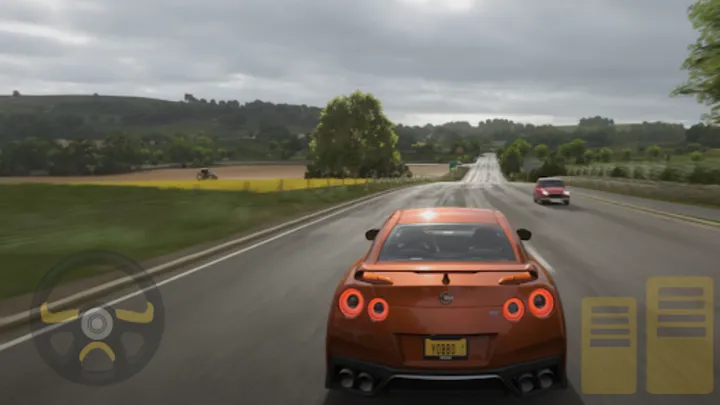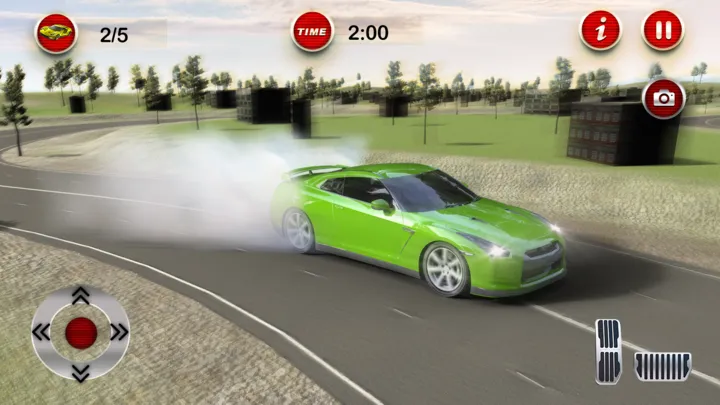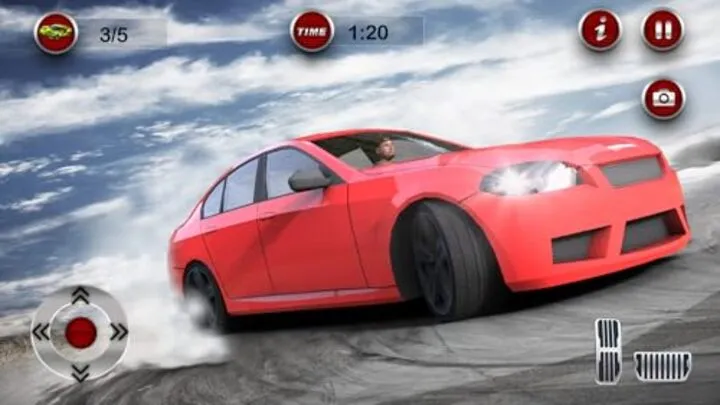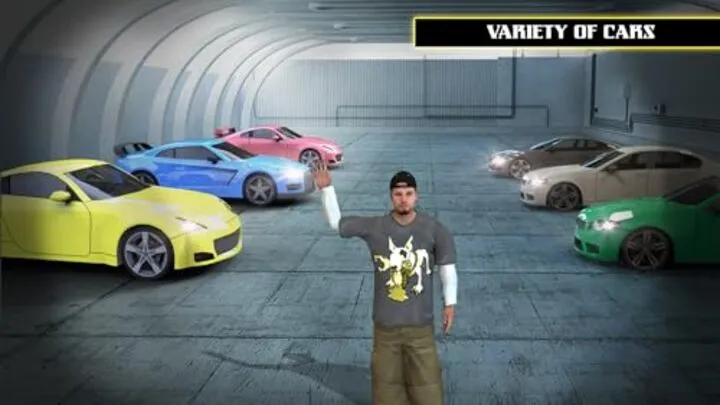GTR Drift Simulator 3D Race offers a surprisingly deep drifting system beneath its open-world driving façade. While most casual players focus on sliding around for points, true mastery comes from understanding how the physics system actually works. The goal of this guide is to teach you one specific advanced skill: how to master precision drifting control. This is not a general overview of drifting. Instead, we break down the internal mechanics that determine stability, angle, weight transfer, and momentum, and show you exactly how to take those mechanics and turn them into consistent, repeatable drifting performance.
This is a complete how-to that dives deep into the hidden techniques professional drifters use—translated directly into the in-game physics of GTR Drift Simulator 3D Race. If you want to stop spinning out, losing drift chains, or over-counter-steering through corners, this guide will walk you through the steps needed to drift with total control and confidence.
Understanding the Foundation of Precision Control

Precision drifting begins with understanding what the physics engine rewards. In this game, the goal is not speed—it is stability. The system calculates drift angles, velocity consistency, and slip levels. You are judged not just on how sideways the car is, but how predictably it stays there. Sudden steering input, chaotic throttle behavior, and random handbrake flicks all disrupt this stability.
Your car does not instantly break traction. Instead, grip gradually decreases as weight shifts. This subtlety is what allows for controlled drifts. When you steer aggressively, you overload the tyres and lose control. When you steer lightly, traction bleeds away evenly, allowing you to maintain a predictable drift line.
This section establishes the fundamentals because every other technique in this guide relies on them.
Why this foundation matters
Stability is the determining factor for long drift chains. High-level players know that angle matters less than consistency. Once you understand this principle, advanced techniques become far easier to execute.
Common beginner mistakes
- Overturning the steering wheel
- Relying too much on the handbrake
- Abrupt throttle usage
- Entering corners at excessive speed
- Letting fear, panic, or hesitation break angle consistency
How to Read Vehicle Weight Transfer
Weight transfer is the invisible force that controls your drift. When you turn, accelerate, or brake, the vehicle shifts weight across its chassis. This shift directly affects tyre grip and drift angle. Mastering weight transfer lets you drift not by force, but by manipulating momentum.
Imagine your car as a moving object that wants to go straight. When you turn slightly, weight moves outward. When the weight moves outward enough, you create the ideal moment to start a drift. This is what advanced players call the “preload.”
Your goal is to learn how it feels when the car is on the edge of traction loss—not sliding yet, but almost. Drift initiation becomes effortless once you can sense this moment.
Two-step weight transfer setup
This is one of the most reliable drift initiation techniques in the game.
Steps
- Steer gently toward the inside of the turn
- Quickly flick the steering in the opposite direction
- Tap throttle to stabilize the new angle
- Apply minimal counter-steer to lock the drift
This technique prevents chaos and gives you a stable, professional-looking drift entry.
Perfecting Throttle Modulation

Throttle control is more important than steering. Many players mistakenly believe drifting is about turning the wheel. In reality, steering determines direction, but throttle determines angle and stability.
Precision drifting requires “pulse throttle,” meaning small rhythmic taps that maintain slip while controlling speed. If you hold full throttle, you overspin. If you release completely, you straighten out. The balance lies between them.
Throttle pulse training
This drill teaches consistency.
Method
- Start a wide drift on an open map section
- Pulse your throttle every half-second
- Adjust pulse speed based on drift angle
- Maintain rhythm even when correcting steering
The goal is to develop a steady instinctive rhythm that maintains controlled slip.
Counter-Steering with Minimal Input
Counter-steering is where most drifters lose control. Beginners often turn too much, creating a pendulum effect that eventually spins them out. Precision drifting requires counter-steering only enough to prevent the nose from diving inward.
The magic rule: counter-steer just enough, then release.
This technique uses momentum more than steering input. When done properly, the car corrects itself naturally.
Counter-steer check method
This technique prevents overcorrection.
Steps
- Watch the hood of your car
- Keep it aligned with the drift path
- Counter just enough to avoid excessive inward turn
- Release steering input to let momentum stabilize the car
Over-steering is a sign of panic. Minimal counter-steer is a sign of control.
Using the Handbrake for Micro Adjustments
The handbrake is the most abused mechanic. Most players treat it as the main drift tool, but in precision drifting, it is the opposite: a micro-adjustment tool. A properly used handbrake is a tiny tap, no longer than a quarter of a second.

Handbrake should:
- sharpen drift angle
- correct angle loss
- help reposition the rear
Handbrake should not:
- initiate the entire drift
- maintain angle
- compensate for poor throttle control
Precision handbrake tap drill
This exercise teaches subtlety.
Steps
- Enter a drift at mid-speed
- Apply the shortest possible handbrake tap
- Immediately add counter-steer
- Add throttle to recover stability
If done right, the car increases angle without losing speed.
Maintaining Momentum Through Complex Corners
Precision drifting is not about speed. It is about rhythm. Complex tracks require you to chain multiple drifts together without straightening. Momentum is your most important resource in these scenarios.
Momentum is controlled by:
- how early you turn
- how gently you counter-steer
- how smoothly you pulse the throttle
- how wide your drift line is
Slowing down too much breaks the combo. Going too fast causes panic corrections. Your goal is to maintain directional flow like water running through a channel.
Inside-to-outside drift line
This technique helps maintain flow through long sequences.
Steps
- Enter the corner from the inside
- Let the drift slide outward
- Use that outward motion to transition into the next corner
This converts motion from one drift into momentum for the next.
Adapting Drift Style to Map Surfaces
Different surfaces behave differently. Asphalt provides medium grip, desert roads provide low grip, and industrial areas vary drastically. Mastering precision drifting requires adapting to each environment rather than fighting it.
Surface adaptation principles:
- low grip = gentle steering and softer throttle
- medium grip = balanced inputs
- high grip = more aggressive flicks
Understanding the surface lets you adjust instantly and maintain control.
Surface awareness training
A simple drill to learn responsiveness.
Steps
- Drift slowly across multiple surfaces
- Observe how much throttle is needed
- Adjust style to match each texture
Eventually, you’ll instinctively adjust based on the sound and feel of the tyres.
Choosing the Right Car for Precision Control

Some cars drift predictably. Others are unpredictable and twitchy. Precision drifting requires cars that allow stable angle development. The goal is gradual rotation—not instant snap oversteer.
Look for cars with:
- balanced weight
- moderate torque
- steady acceleration curves
- smooth counter-steering responsiveness
Lightweight cars rotate faster but require skill. Heavy GTR-class vehicles are easier for stability but harder for transitions.
What matters most in a drift car
Choose vehicles not based on top speed, but on drift personality.
Ideal traits
- Progressive drift angle
- Even torque distribution
- Low-mid weight class
- Forgiving slip behavior
These traits allow smoother precision control.
Custom Tuning for Stability and Predictability
Tuning transforms your car. Even small modifications drastically alter drift behavior. Precision drifting setups prioritize predictability over aggressiveness.
A stable car makes consistent drifting possible. A twitchy car makes learning impossible.
Key tuning priorities:
- suspension stiffness
- tyre pressure
- brake force
- steering sensitivity
Recommended precision tuning setup
This is a balanced setup for controlled drifts.
Suggested values
- Suspension: medium-low
- Tire pressure: medium
- Brake strength: slightly reduced
- Steering sensitivity: slightly below default
This setup favors smoothness and control.
Building Muscle Memory Through Repetition
Muscle memory is the final step toward mastery. Your fingers must respond automatically. Your mind must predict the car’s movement before it happens. Repetition is the only way to achieve this.
Run the same drift line repeatedly. Use the same car. Use the same tuning. This consistency builds instinct.
Five-minute repetition loop
A training loop designed for rapid muscle memory development.
Routine
- Select a medium-length route
- Drift the entire track without stopping
- Restart immediately
- Repeat for five minutes straight
This repetitive cycle creates natural instinctive control.
Conclusion
Precision drifting in GTR Drift Simulator 3D Race is a skill built from understanding vehicle physics, mastering throttle pulses, controlling counter-steering, and learning how map surfaces affect traction. This guide has shown you how to read weight transfer, apply micro handbrake adjustments, tune your car for stability, and build reflexive muscle memory to maintain momentum through advanced drift lines.
Once you combine each of these skills, drifting stops being chaotic or overly forceful. Instead, your drifting becomes smooth, predictive, and controlled. Keep practicing the drills in this guide, refine your timing, and your drifting will evolve into a seamless, professional-level style.

















